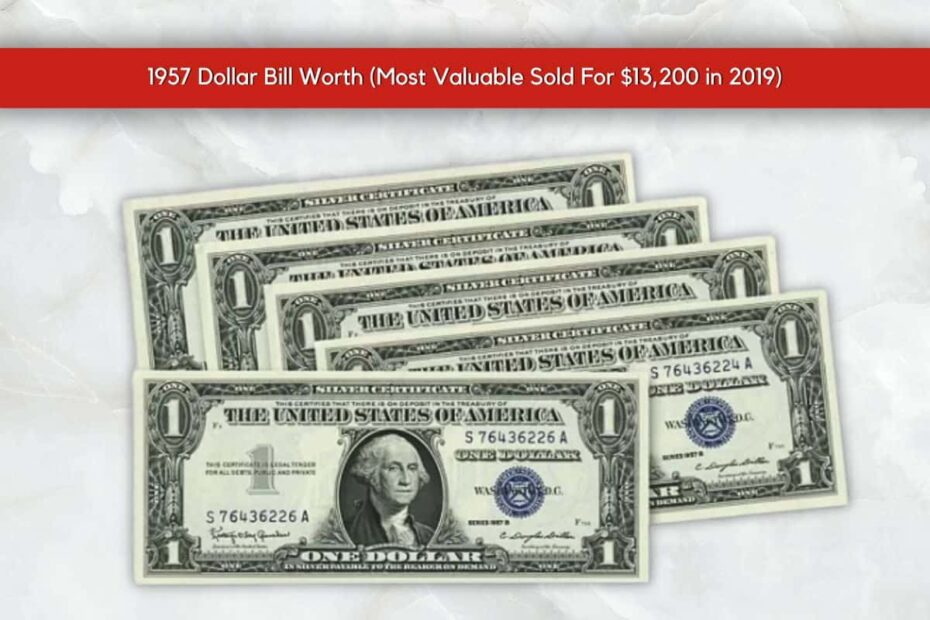Prelude to a Numismatic Adventure
Imagine holding a piece of history that fits perfectly in your palm – a 1957 silver certificate. This isn‘t just currency; it‘s a time capsule whispering stories of mid-20th century America. As a seasoned collector with decades of experience, I‘ve learned that every note carries a narrative far beyond its monetary value.
My fascination with the 1957 silver certificate began decades ago in my grandfather‘s study, where a pristine specimen rested in a mahogany display case. Little did I know that this single piece of paper would spark a lifelong passion for understanding the intricate world of vintage American currency.
The Historical Tapestry of a Remarkable Year
1957 was more than just another year in American history. It represented a pivotal moment of transition in monetary policy, cultural identity, and national symbolism. The silver certificate issued that year wasn‘t merely a medium of exchange – it was a profound statement about America‘s evolving identity.
The Birth of a Symbolic Currency
When the U.S. Treasury released the 1957 silver certificate, it marked the culmination of significant cultural and monetary transformations. The most striking feature? The prominent inscription "In God We Trust" – a motto that would become synonymous with American currency.
This wasn‘t just a random addition. The motto reflected the complex sociopolitical landscape of 1950s America – a period characterized by Cold War tensions, rising religious sentiment, and a national desire to differentiate itself from "godless" communist ideologies.
Technical Marvels of the 1957 Silver Certificate
From a numismatic perspective, the 1957 silver certificate represents a pinnacle of printing technology. The intricate design, precise engraving, and sophisticated anti-counterfeiting measures were revolutionary for their time.
The paper itself was a marvel. Crafted from a unique blend of cotton and linen, each note underwent rigorous quality control. Specialized watermarks, intricate serial number systems, and precise color gradations made each bill a miniature work of art.
The Printing Process: A Symphony of Precision
Imagine the massive printing facilities of the Bureau of Engraving and Printing in the 1950s. Massive rotary presses, operated by skilled technicians, would produce sheets of currency with near-mechanical perfection. Each sheet represented hours of meticulous preparation, from design conception to final print.
The 1957 series saw approximately 5.3 billion notes printed across three distinct series – 1957, 1957A, and 1957B. Each series carried subtle variations in signature combinations and printing techniques, making them fascinating study subjects for serious collectors.
Valuation: More Than Just Monetary Worth
When discussing the value of a 1957 silver certificate, we‘re not just talking about dollars and cents. We‘re exploring a complex ecosystem of historical significance, rarity, condition, and collector sentiment.
A standard 1957 silver certificate in circulated condition might fetch between $3 to $18. However, certain specimens can command astronomical prices. A note with a unique serial number, like 88888888, sold for an impressive $8,700 in a 2022 auction.
The Collector‘s Holy Grail: Rare Variations
Some collectors spend entire careers hunting for the most extraordinary variations. Low serial number notes, particularly those with single-digit numbers like X00000001A, can sell for thousands of dollars. Star notes – replacement bills marked with a distinctive star symbol – represent another realm of collectible treasure.
Preservation: Protecting Historical Artifacts
As a collector, I cannot overemphasize the importance of proper preservation. Each 1957 silver certificate is a fragile historical document that requires careful handling and storage.
Ideal preservation involves:
- Maintaining consistent temperature and humidity
- Using acid-free archival storage materials
- Avoiding direct sunlight
- Minimizing physical handling
The Emotional Connection
Beyond technical details and market values, vintage currency collecting is fundamentally an emotional pursuit. Each note represents a moment frozen in time – a tangible connection to our collective past.
When I hold a 1957 silver certificate, I‘m not just holding paper. I‘m holding a piece of American history, a testament to the economic, cultural, and technological landscape of a transformative decade.
Conclusion: A Living Legacy
The 1957 silver certificate is more than a collectible. It‘s a bridge between generations, a storyteller of economic evolution, and a remarkable artifact that continues to captivate collectors worldwide.
Whether you‘re a seasoned numismatist or a curious newcomer, these notes offer a fascinating glimpse into a pivotal moment in American monetary history.
Collect wisely, preserve carefully, and always remember – every note has a story waiting to be discovered.
